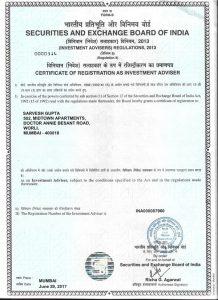Part 1 – Why PMS/Advisory data is misleading so very often
- Since a lot of you might be looking at various PMS funds/advisory firms performance data, let me explain to you all what does the performance data signifies and hence why in many ways it is completely irrelevant. For any additional queries, you can always ping me. Whenever I use PMS here – I mean all kinds of non-pooled vehicle including advisory and whenever I mean MF – I mean all kinds of pooled vehicle including private equity, hedge funds and AIF Category 3 funds.
- One needs to understand clearly that in case of a PMS/Advisory, the performance shown is that of the first client or a model porfolio in its website/marketing material etc (since it is a non-pooled vehicle). So let’s say the first client was added to PMS when the NIFTY was 6000. Soon enough market rises to 9000 and 10 more clients were added to that levels. In this case assuming the PMS bought the entire NIFTY, it will show its performance as 50% since inception, even though 10 out of 11 clients will be at 0% returns. Now let’s say market falls to 8000. In this case, PMS will show its performance as 33% even though 10 out of 11 clients will be sitting at a loss of 11%. This is the single biggest anomaly of PMS firms and the same applies to investment advisory firms.
- For an investment management firm, equally important is when to take in money from the investors, what levels various investors are entering and what levels investors are redeeming.
- The problem is that PMS firms/advisory firms etc. performance varies significantly from client to client. I know of PMS firms which started in Feb of 2016 and are showing great performance even though the bulk of the money has come now and is sitting on almost zero profits. This is also the reason why most of them love to charge fixed fees these days and rely very little on profit share. So just by looking at a PMS firm performance, you can’t assume that your returns will be a similar levels – crucially if you are investing at the top end of the market cycle, you are most likely to loose money irrespective of past performance of any vehicle – only an extremely good manager can save you from this potential loss (even when you invest at the top) – these managers are rare and most wouldn’t waste their time coming on CNBC TV18 and other such entertainment channels.
Part 2 – Fundamental flaw in non-pooled vehicle model which an investor should be aware of
- The second fundamental and equally important fact (and I am telling you from my own personal experience of reading and managing money) are that PMS firms/advisory firms, in general, because of their structural flaw, will reduce the investor performance (everything else remaining the same, ceteris paribus some say).
- Let’s say I am an MF/AIF CAT3/PE fund and I am managing 100 cr and I have a portfolio of just 4 stocks – Bajaj Fin (25%), Eicher Motors (25%), RBL (25%), Infosys(25%). Now currently Bajaj Fin, Eicher Motors and RBL are trading very expensively and Infosys is trading very cheaply. Let’s say Mr A becomes a new investor and invests 1 cr in the fund. Now a smart and well-incentivised MF manager (and sadly there aren’t many in the industry) will just use that 1 cr to buy Infosys so that portfolio changes to Eichers Motors, RBL, Bajaj fin (24.5% each – a reduction in expensive stocks) and 26% in Infosys (a increase in cheap stock) – which is what is ideal.
- However because PMS/advisory is a non-pooled vehicle and they have typically only one model portfolio and because of millions other wrong incentives – the PMS manager will not want to alter the portfolio just because a new client has come in – else he will have to do buy and sell for all the clients and all the stocks – which will also create a lot of unnecessary brokerage cost and short term gains tax. So for the new investor, he will buy stocks in the same proportion – hence he will end up buying 3/4th of the portfolio at very expensive valuation for the new investors while also not reducing the weightage of expensive stocks for everybody else. This is the single biggest structural problem in PMS/advisory. This can be solved if he starts a new model portfolio for each client based on then market conditions – but that is just not scalable solution for any of the large PMS/advisory firm. This is the reason a lot of such firms are buying Canfin homes, Bajaj Fin and other expensive stocks for the new investors – I am not saying that these will necessarily lead to loss but buying a stock without a margin of safety is a bad deal irrespective of a whether or not it makes money.
- Most importantly, a PMS firm hardly cares so much about all the follow on clients money and at levels shares are being bought because a) it reports only the first client performance and doesn’t have to worry about the performance of subsequent clients and b) in most cases fees is anyways being charged at fixed and not variable.
I know all of this might have sounded technically difficuly to grasp, happy to help with the queries on the same.

